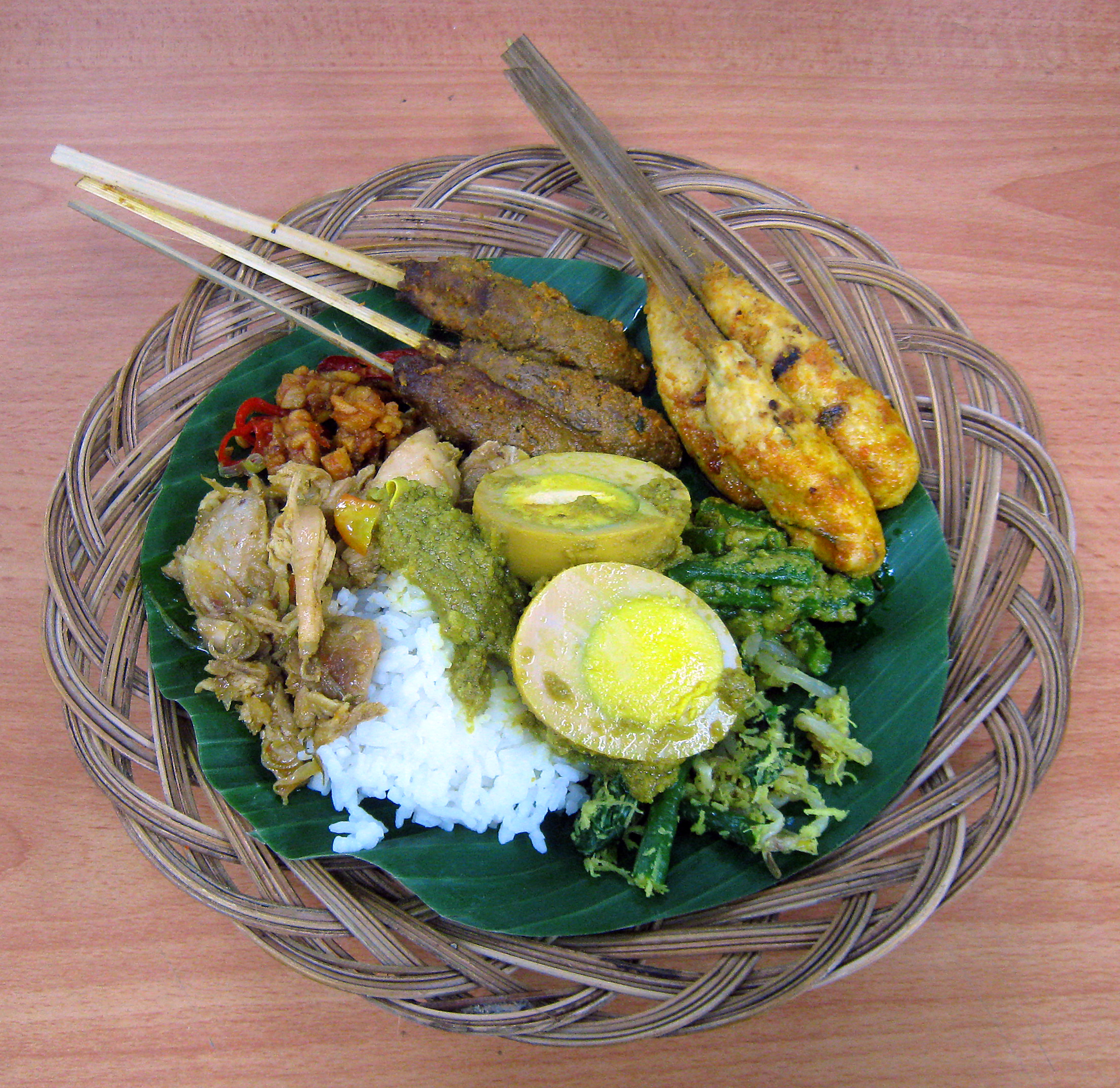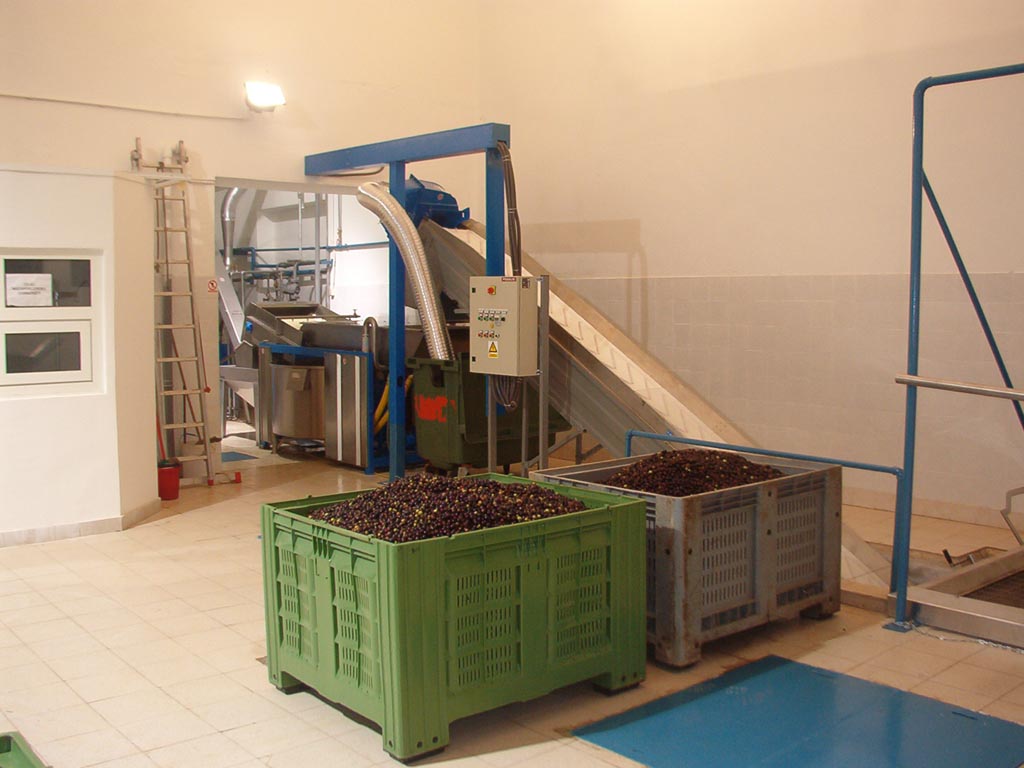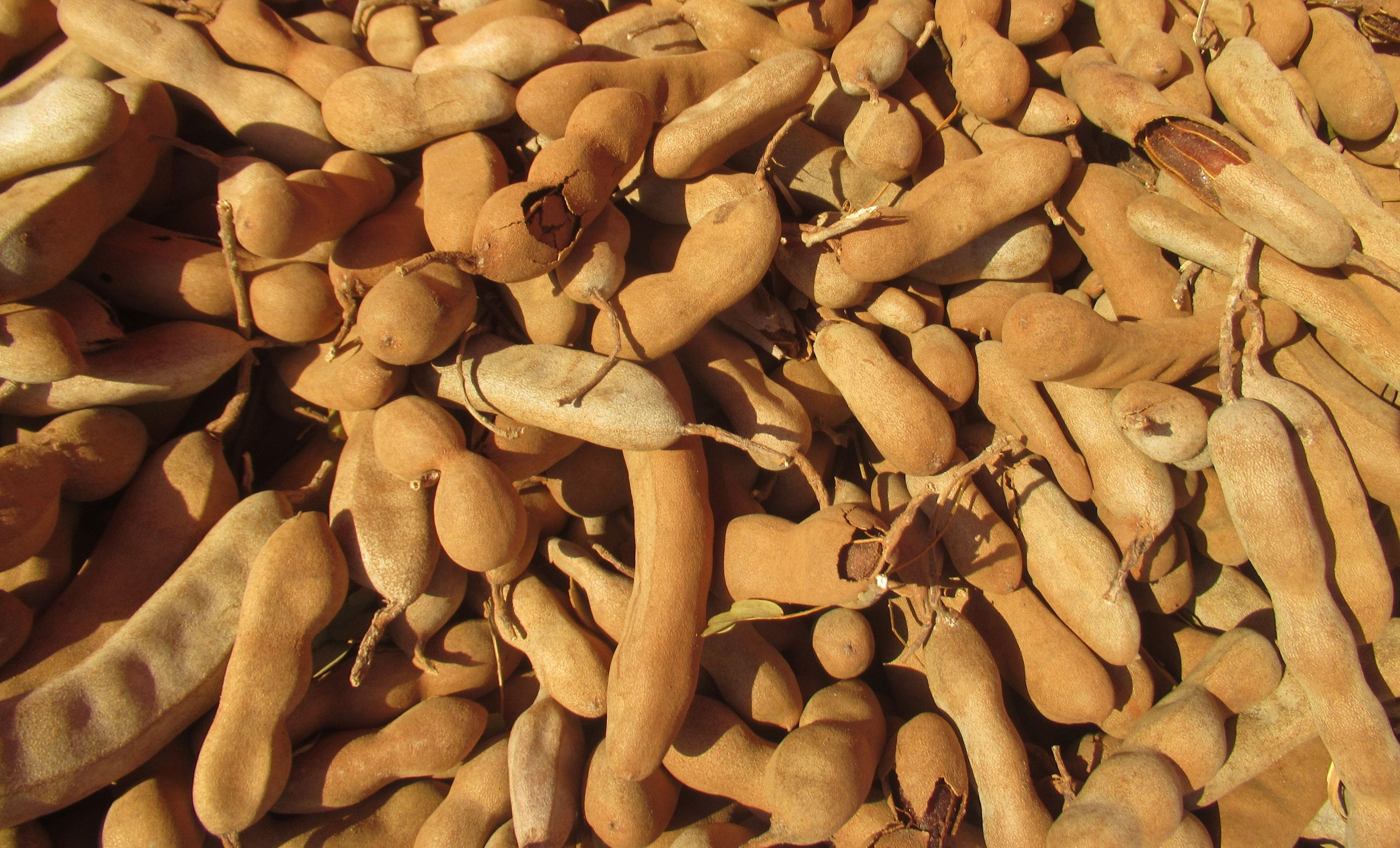|
Bumbu (seasoning)
Bumbu () is the Indonesian language, Indonesian word for a blend of spices and for pastes and it commonly appears in the names of spice mixtures, sauces and seasoning pastes. The Great Dictionary of the Indonesian Language of the Language Center, official Indonesian language dictionary describes ''bumbu'' as "various types of herbs and plants that have a pleasant aroma and flavour — such as ginger, turmeric, galangal, nutmeg and pepper — used to enhance the flavour of the food." It is a characteristic of Indonesian cuisine and its regional variants such as Balinese cuisine, Balinese, Javanese cuisine, Javanese, Sundanese cuisine, Sundanese, Padang food, Padang, Batak cuisine, Batak and Manado cuisine, Manado cuisines. It is used with various meats, seafood and vegetables in stews, soups, barbecue, soto (food), sotos, gulai, and also as an addition to Indonesian-style instant noodles. Indonesians have developed original gastronomic themes with lemongrass and galangal, cardam ... [...More Info...] [...Related Items...] OR: [Wikipedia] [Google] [Baidu] |
Lemongrass
''Cymbopogon'', also known as lemongrass, barbed wire grass, silky heads, oily heads, Cochin grass, Malabar grass, citronella grass or fever grass, is a genus of Asian, African, Australian, and tropical island plants in the grass family. Some species (particularly ''Cymbopogon citratus'') are commonly cultivated as culinary and medicinal herbs because of their scent, resembling that of lemons (''Citrus limon''). The name ''Cymbopogon'' derives from the Greek words (, 'boat') and (, 'beard') "which mean hatin most species, the hairy spikelets project from boat-shaped spathes." Lemongrass and its oil are believed to possess therapeutic properties. Uses Citronella grass ('' Cymbopogon nardus'' and ''Cymbopogon winterianus'') grow to about and have magenta-colored base stems. These species are used for the production of citronella oil, which is used in soaps, as an insect repellent (especially mosquitoes and houseflies) in insect sprays and candles, and aromatherapy. The princ ... [...More Info...] [...Related Items...] OR: [Wikipedia] [Google] [Baidu] |
Nasi Campur
Nasi campur (Indonesian language, Indonesian and Malay language, Malay for 'mixed rice'; ), also known as nasi rames () or sego campur (; ) in Java, refers to an Indonesian cuisine, Indonesian and Malay cuisine, Malay dish of a scoop of ''nasi putih'' (steamed rice, white rice) accompanied by small portions of several other dishes, including meats, vegetables, peanut, peanuts, eggs, and fried-shrimp krupuk. Depending on the origin, a nasi campur vendor might serve several side dishes, including vegetables, fish, and meats. It is a staple meal from Indonesia, Malaysia, Singapore, Brunei, and southern Thailand, and also popular in the Netherlands through its colonial ties with Indonesia. This concept has parallels across Asia and the Pacific islands, Pacific: in Thailand, it is known as khao kaeng (), and in Vietnam as cơm bình dân. In the Philippines, the carinderia offers a similar meal style, and in Japan, it is called ''ichijū-sansai''. Similarly, in Hawaii, it is known ... [...More Info...] [...Related Items...] OR: [Wikipedia] [Google] [Baidu] |
Malaysian Cuisine
Malaysian cuisine (Malay language, Malay: ''Masakan Malaysia''; Jawi script, Jawi: ) consists of cooking traditions and practices found in Malaysia, and reflects the multi-ethnic makeup of its population. The vast majority of Malaysia's population can roughly be divided among three major ethnic groups: Ethnic Malays, Malays, Chinese Malaysian, Chinese and Indian Malaysian, Indians. The remainder consists of the Dayak people, indigenous peoples of Sabah and Sarawak in East Malaysia, the Orang Asli of Peninsular Malaysia, the Peranakan and Eurasian creole communities, as well as a significant number of foreign workers and expatriates. As a result of historical migrations, colonisation by foreign powers, and its geographical position within its wider home region, Malaysia's culinary style in the present day is primarily a melange of traditions from its Malay, Chinese, Indian, Indonesian cuisine, Indonesian, Thai, Filipino cuisine, Filipino and indigenous Bornean and Orang Asli, w ... [...More Info...] [...Related Items...] OR: [Wikipedia] [Google] [Baidu] |
Cooking Oil
Cooking oil (also known as edible oil) is a plant or animal liquid fat used in frying, baking, and other types of cooking. Oil allows higher cooking temperatures than water, making cooking faster and more flavorful, while likewise distributing heat, reducing burning and uneven cooking. It sometimes imparts its own flavor. Cooking oil is also used in food preparation and flavoring not involving heat, such as salad dressings and bread dips. Cooking oil is typically a liquid at room temperature, although some oils that contain saturated fat, such as coconut oil, palm oil and palm kernel oil are solid. There are a wide variety of cooking oils from plant sources such as olive oil, palm oil, soybean oil, canola oil ( rapeseed oil), corn oil, peanut oil, sesame oil, sunflower oil and other vegetable oils, as well as animal-based oils like butter and lard. Oil can be flavored with aromatic foodstuffs such as herbs, chilies or garlic. Cooking spray is an aerosol of coo ... [...More Info...] [...Related Items...] OR: [Wikipedia] [Google] [Baidu] |
Food Processor
A food processor is a kitchen appliance used to facilitate repetitive tasks in the preparation of food. Today, the term almost always refers to an electric-motor-driven appliance, although there are some manual devices also referred to as "food processors". Food processors are similar to blenders in many forms. A food processor typically requires little to no liquid during use, and even its finely chopped products retain some texture. A blender, however, requires some liquid for the blade to properly blend the food, and its output is more liquid. Food processors are used to blend, chop, dice, and slice, allowing for quicker meal preparation. History One of the first electric food processors was the Starmix, introduced by German company Electrostar in 1946. Although the basic unit resembled a simple blender, numerous accessories were available, including attachments for slicing bread, milk centrifuges and ice cream bowls. In a time when electric motors were expensive, they also ... [...More Info...] [...Related Items...] OR: [Wikipedia] [Google] [Baidu] |
Mortar And Pestle
A mortar and pestle is a set of two simple tools used to prepare ingredients or substances by compression (physics), crushing and shear force, grinding them into a fine Paste (rheology), paste or powder in the kitchen, laboratory, and pharmacy. The ''mortar'' () is characteristically a bowl, typically made of hardwood, metal, ceramic, or hard stone such as granite. The ''pestle'' (, also ) is a blunt, club-shaped object. The substance to be ground, which may be wet or dry, is placed in the mortar where the pestle is pounded, pressed, or rotated into the substance until the desired texture is achieved. Mortars and pestles have been used in cooking since the Stone Age; today they are typically associated with the pharmacy profession due to their historical use in preparing medicines. They are used in chemistry settings for pulverizing small amounts of chemicals; in arts and cosmetics for pulverizing pigments, binders, and other substances; in ceramics for making Grog (clay), grog; ... [...More Info...] [...Related Items...] OR: [Wikipedia] [Google] [Baidu] |
Thai Cuisine
Thai cuisine (, , ) is the national cuisine of Thailand. Thai cooking places emphasis on lightly prepared dishes with aromatics and spicy heat. The Australian chef David Thompson (chef), David Thompson, an expert on Thai food, observes that unlike many other cuisines, Thai cooking is "about the juggling of disparate elements to create a harmonious finish. Like a complex musical chord it's got to have a smooth surface but it doesn't matter what's happening underneath. Simplicity isn't the dictum here, at all." Traditional Thai cuisine loosely falls into four categories: ''tom'' (boiled dishes), ''yam'' (spicy salads), ''tam'' (pounded foods), and ''kaeng'' (curries). Deep-frying, stir-frying and steaming are methods introduced from Chinese cuisine. In 2011, seven Thai dishes appeared on a list of the "World's 50 Best Foods", an online poll of 35,000 people worldwide by ''CNN Travel''. Thailand had more dishes on the list than any other country: tom yum kung (4th), pad thai (5 ... [...More Info...] [...Related Items...] OR: [Wikipedia] [Google] [Baidu] |
Spice Mix
Spice mixes are blended spices or herbs. When a certain combination of herbs or spices is called for in a recipe, it is convenient to blend these ingredients beforehand. Blends such as chili powder, curry powder, herbes de Provence, garlic salt, and other seasoned salts are traditionally sold pre-made by grocers, and sometimes baking blends such as pumpkin pie spice are also available. These spice mixes are also easily made by the home cook for later use. Masala Masala (from Hindi language, Hindi/Urdu language, Urdu ''masalah'', based on Arabic language, Arabic ''masalih'') is a term from the Indian subcontinent for a spice mix. A masala can be either a combination of dried (and usually Dry roasting, dry-roasted) spices, or a paste (food), paste (such as vindaloo masala) made from a mixture of spices and other ingredients—often garlic, ginger, onions, chilli paste and tomato. Masalas are used extensively in Indian cuisine to add spice and flavour, most familiarly to Western cu ... [...More Info...] [...Related Items...] OR: [Wikipedia] [Google] [Baidu] |
Indian Cuisine
Indian cuisine consists of a variety of regional and traditional cuisines native to the Indian subcontinent. Given the diversity in soil, climate, culture, ethnic groups, and occupations, these cuisines vary substantially and use locally available spices, herbs, vegetables, and fruits. Indian food is also heavily influenced by religion, in particular Hinduism and Islam, cultural choices and traditions. Historical events such as invasions, trade relations, and colonialism have played a role in introducing certain foods to India. The Columbian exchange, Columbian discovery of the New World brought a number of new vegetables and fruits. A number of these such as potatoes, tomatoes, Chili pepper, chillies, peanuts, and guava have become staples in many regions of India. Indian cuisine has shaped the history of international relations; the spice trade between India and Europe was the primary catalyst for Europe's Age of Discovery. Spices were bought from India and traded around ... [...More Info...] [...Related Items...] OR: [Wikipedia] [Google] [Baidu] |
Turmeric
Turmeric (), or ''Curcuma longa'' (), is a flowering plant in the ginger family Zingiberaceae. It is a perennial, rhizomatous, herbaceous plant native to the Indian subcontinent and Southeast Asia that requires temperatures between and high annual rainfall to thrive. Plants are gathered each year for their rhizomes, some for propagation in the following season and some for consumption or dyeing. The rhizomes can be used fresh, but they are often boiled in water and dried, after which they are ground into a deep orange-yellow shelf-stable spice powder commonly used as a coloring and flavoring agent in many Asian cuisines, especially for curries ( curry powder). Turmeric powder has a warm, bitter, black pepper-like flavor and earthy, mustard-like aroma. Although long used in Ayurvedic medicine, there is no high-quality clinical evidence that consuming turmeric or the principal turmeric constituent, curcumin, is effective for treating any disease. Curcumin, a bright ye ... [...More Info...] [...Related Items...] OR: [Wikipedia] [Google] [Baidu] |
Tamarind
Tamarind (''Tamarindus indica'') is a Legume, leguminous tree bearing edible fruit that is indigenous to tropical Africa and naturalized in Asia. The genus ''Tamarindus'' is monotypic taxon, monotypic, meaning that it contains only this species. It belongs to the family Fabaceae. The tamarind tree produces brown, pod-like fruits that contain a sweet, tangy pulp, which is used in cuisines around the world. The pulp is also used in traditional medicine and as a metal polish. The tree's wood can be used for woodworking and #Seed oil and kernel powder, tamarind seed oil can be extracted from the seeds. Tamarind's tender young leaves are used in Indian cuisine, Indian and Filipino cuisine. Because tamarind has multiple uses, it is cultivated around the world in Tropical zone, tropical and Subtropics, subtropical zones. Description The tamarind is a long-living, medium-growth tree, which attains a maximum crown (botany), crown height of . The crown has an irregular, vase-shape ... [...More Info...] [...Related Items...] OR: [Wikipedia] [Google] [Baidu] |








